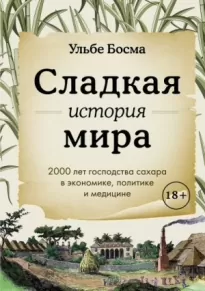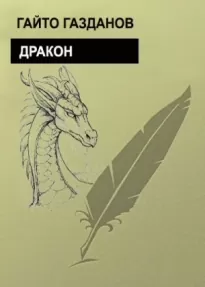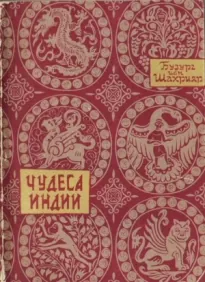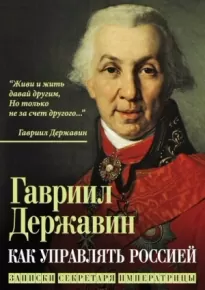Сладкая история мира. 2000 лет господства сахара в экономике, политике и медицине

- Автор: Ульбе Босма
- Жанр: Научная литература / Исторические приключения / История: прочее
Читать книгу "Сладкая история мира. 2000 лет господства сахара в экономике, политике и медицине"
2. Сахар идет на запад
1 Tsugitaka Sato, Sugar in the Social Life of Medieval Islam (Leiden: Brill, 2015), 34–36.
2 Mohamed Ouerfelli, Le Sucre: Production, commercialisation et usages dans la Méditerranée médiévale (Leiden: Brill, 2008), 81.
3 Sato, Sugar in the Social Life, 40–45.
4 Subhi Lahib, Handelsgeschichte Ägyptens im Spätmittelalter (1171–1517) (Wiesbaden, Germany: Franz Steiner Verlag, 1965), 319–320.
5 Eliyahu Ashtor, «Levantine Sugar Industry in the Later Middle Ages: An Example of Technological Decline,» in Technology, Industry and Trade: The Levant versus Europe, 1250–1500, ed. Eliyahu Ashtor and B.Z.Kedar (Hampshire, England: Ashgate, 1992), 240.
6 См., например: Judith Bronstein, Edna J. Stern, and Elizabeth Yehuda, «Franks, Locals and Sugar Cane: A Case Study of Cultural Interaction in the Latin Kingdom of Jerusalem,» Journal of Medieval History 45, no. 3 (2019): 316–330; Judith Bronstein, The Hospitallers and the Holy Land: Financing the Latin East, 1187–1274 (Woodbridge, England: Boydell and Brewer, 2005).
7 Edna J.Stern et al., «Sugar Production in the ‘Akko Plain from the Fatimad to the Early Ottoman Periods,» in The Origins of the Sugar Industry and the Transmission of Ancient Greek and Medieval Arab Science and Technology from the Near East to Europe, ed. K.D.Politis (Athens: National and Kapodistriako University of Athens, 2015), 89–93; Hamdan Taha, «Some Aspects of Sugar Production in Jericho, Jordan Valley,» in A Timeless Vale: Archaeological and Related Essays on the Jordan Valley in Honour of Gerrit van der Kooij on the Occasion of His Sixty-Fifth Birthday, ed. Eva Kaptijn and Lucas Pieter Petit (Leiden: Leiden University Press, 2009), 181, 186–187.
8 Eliyahu Ashtor, Levant Trade in Later Middle Ages (Princeton, NJ: Princeton University Press, 1983), 17–18.
9 Bethany J.Walker, «Mamluk Investment in Southern Bilad Al-Sham in the Eighth / Fourteenth Century: The Case of Hisban,» Journal of Near Eastern Studies 62, no. 4 (2003): 244; Laparidou Sofia and M.Rosen Arlene, «Intensification of Production in Medieval Islamic Jordan and Its Ecological Impact: Towns of the Anthropocene,» The Holocene 25, no. 10 (2015): 1687–1688.
10 Ashtor, Levant Trade, 52–53.
11 A.T.Luttrell, «The Sugar Industry and its Importance for the Economy of Cyprus during the Frankish Period,» in The Development of the Cypriot Economy: From the Prehistoric Period to the Present Day, ed. Vassos Karageorghis and Demetris Michaelides (Nicosia: Printed by Lithographica, 1996), 168; Ashtor, Levant Trade, 39.
12 Luttrell, «The Sugar Industry,» 166.
13 Ellen Herscher, «Archaeology in Cyprus,» American Journal of Archaeology 102 (1998): 351–352; Marie-Louise von Wartburg, «The Medieval Cane Sugar Industry in Cyprus: results of Recent Excavation,» Antiquaries Journal 63, no. 2 (1983): 304, 309, 312, 313.
14 Darra Goldstein, The Oxford Companion to Sugar and Sweets (Oxford: Oxford University Press, 2015), 767.
15 Stuart J.Borsch, The Black Death in Egypt and England: A Comparative Study (Austin: University of Texas Press, 2010), 24.
16 Labib, Handelsgeschichte, 421.
17 Ashtor, Levant Trade, 102, 131–132.
18 Walker, «Mamluk Investment,» 249; John L.Meloy, «Imperial Strategy and Political Exigency: The Red Sea Spice Trade and the Mamluk Sultanate in the Fifteenth Century,» Journal of The American Oriental Society 123, no. 1 (2003): 5.
19 Nelly Hanna, Artisan Entrepreneurs in Cairo and Early-Modern Capitalism (1600–1800) (New York: Syracuse University Press, 2011), 44.
20 Ronald Findlay and Kevin H.O’Rourke, Power and Plenty: Trade, War, and the World Economy in the Second Millennium (Princeton, NJ: Princeton University Press, 2009), 132.
21 Ibn-al-‘Auwām, Le Livre de l’Agriculture par…, trans. J.J.Clément-Mullet, vol. 1 (Paris: Albert L.Hérold, 1864), 365–367.
22 Ouerfelli, Le sucre, 180, 192–194; Adela Fábregas García, Producción y comercio de azúcar en el Mediterráneo medieval: El ejemplo del reino de Granada (Granada: Editorial Universidad de Granada, 2000), 151–163.
23 Ouerfelli, Le sucre, 25.
24 Stefan R.Epstein, An Island for Itself: Economic Development and Social Change in Late Medieval Sicily (Cambridge: Cambridge University Press, 2003), 210–215; Carmelo Trasselli, Storia dello Zucchero siciliano (Caltanissetta, Italy: S. Sciascia, 1982), 115–174.
25 Mohammed Ouerfelli, «L’impact de la production du sucre sur les campagnes méditerranéennes à la fin du Moyen Âge,» Revue des Mondes musulmans et de la Méditerranée, no. 126 (2012): para. 34.
26 Ashtor, «Levantine Sugar Industry,» 246–257. Аштор объясняет более низкую цену лучшей технологией помола, но это основано на неверной интерпретации сицилийской trapetto как мельницы с тремя валками, когда на самом деле это была бегунковая мельница.
27 Aloys Schulte, Geschichte der Großen Ravensburger Handelsgesellschaft, 1380–1530, 2 vols. (Stuttgart: Deutsche Verlags-Anstalt, 1923), 1:17, 21, 31.
28 Schulte, Geschichte der Großen Ravensburger, 2:176–177.
29 Stern et al., «Sugar Production,» 109.
30 Alberto Vieira, «The Sugar Economy of Madeira and the Canaries, 1450–1650,» in Tropical Babylons: Sugar and the Making of the Atlantic World, 1450–1680, ed. Stuart B.Schwartz (Chapel Hill: University of North Carolina Press, 2004), 65.
31 Juan Manuel Bello León and Mariá Del Cristo Gonzáles Marrero, «Los ‘otros extranjeros’ catalanes, flamencos, franceses e ingleses en la sociedad canaria de los siglos XV y XVI,» Revista de Historia Canaria 179 (1997): 11–72; 180 (1998): 16, 55–64.
32 Ouerfelli, Le sucre, 51–52; Stern et al., «Sugar Production,» 99.
33 Luttrell, «The Sugar Industry,» 166; von Wartburg, «The Medieval cane Sugar Industry,» 301.
34 Jason W.Moore, «Madeira, Sugar, and the Conquest of Nature in the ‘First’ Sixteenth Century, Part II: From Regional Crisis to Commodity Frontier, 1506–1530,» Review (Fernand Braudel Center) 33, no. 1 (2010): 11–13; Stefan Halikowski Smith, «The Mid-Atlantic Islands: A Theatre of Early Modern Ecocide?» International Review of Social History 55, suppl. 18 (2010): 65–67; Vieira, «The Sugar Economy of Madeira,» 45.
35 María Luisa Frabellas, «La producción de azúcar en Tenerife,» Revista de Historia (Tenerife) 18, no. 100 (1952): 466: Vieira, «The Sugar Economy of Madeira,» 45; Felipe Fernandez-Armesto, The Canary Islands after the Conquest: The Making of a Colonial Society in the Early Sixteenth Century (Oxford: Oxford University Press, 1981), 65, 91, 106.
36 Frabellas, «La producción de azúcar,» 456; J.H.Galloway, The Sugar Cane Industry: An Historical Geography from its Origins to 1914 (Cambridge: Cambridge University Press, 1989), 57.
37 von Wartburg, «The Medieval Cane Sugar Industry,» 314n.22.
38 Ouerfelli, «L’impact,» paras. 14–15, 20, 22, 27; Fernandez-Armesto, The Canary Islands, 97–98.
39 Ouerfelli, Le sucre, 270–271.
40 Vieira, «The Sugar Economy of Madeira,» 75. Об экологических проблемах, которые сопутствовали производству сахара на атлантических островах, см.: Halikowski Smith, «The Mid-Atlantic Islands,» 63–67.
41 Ritter, Über die geographische, 103; M.Akif Erdoğru, «The Servants and Venetian Interest in Ottoman Cyprus in the Late Sixteenth and the Early Seventeenth Centuries,» Quaderni di Studi Arabi 15 (1997): 104–105.
42 Ouerfelli, Le sucre, 23–24; Jacqueline Guiral-Hadziiossif, «La diffusion et la production de la canne à sucre: XIIIe – XIVe siècles,» Anuario de Estudios Medievales / Consejo Superior de Investigaciones Cientificas 24 (1994): 225–226; Sato, Sugar in the Social Life, 38.
43 Ouerfelli, Le sucre, 126–127; Luttrell, «The Sugar Industry,» 167. Есть упоминание о тысячах рабов на королевских сахарных плантациях Кипра, но без дополнительных подтверждений оно не выглядит слишком правдоподобным. Benjamin Arbel, «Slave Trade and Slave Labor in Frankish Cyprus (1191–1571),» in Cyprus, The Franks and Venice, 13th–16th Centuries, ed. Benjamin Arbel (Aldershot, England: Variorum, 2000), 161.
44 Ouerfelli, «L’impact,» para. 8. Сато также отрицает присутствие рабов в сахарной отрасли в Марокко. Sato, Sugar in the Social Life, 39. См. также: David Abulafia, «Sugar in Spain,» European Review 16, no. 2 (2008): 198.
45 Fernandez-Armesto, The Canary Islands, 202.
46 Sidney W.Mintz, Sweetness and Power: The Place of Sugar in Modern History (Harmondsworth, England: Penguin, 1986), 78.
47 Paul D.Buell, «Eurasia, Medicine and Trade: Arabic Medicine in East Asia – How It Came to Be There and How It Was Supported, Including Possible Indian Ocean Connections for the Supply of Medicinals,» in Early Global Interconnectivity across the Indian Ocean World, vol. 2, Exchange of Ideas, Religions, and Technologies, ed. Angela Schottenhammer (London: Palgrave Macmillan, 2019), 270–293.
48 Woodruff D.Smith, Consumption and the Making of Respectability, 1600–1800 (London: Routledge, 2002), 266n.84; Edmund Oskar von Lippmann, Geschichte des Zuckers: Seit den ältesten Zeiten bis zum Beginn der Rübenzucker-Fabrikation: ein Beitrag zur Kulturgeschichte (Berlin: Springer, 1929), 274–275.
49 Ouerfelli, Le sucre, 587; Sato, Sugar in the Social Life, 92–94.
50 Перевод автора. Lippmann, Geschichte des Zuckers, 245–254, 290.
51 Lady Fawcett, Charles Fawcett, and Richard Burn, The Travels of the Abbé Carré in India and the Near East, 1672 to 1674, vol. 1 (London: Hakluyt Society, 1947), 46.
52 Wendy A.Woloson, Refined Tastes: Sugar, Confectionery, and Consumers in Nineteenth-Century America (Baltimore, MD: Johns Hopkins University Press, 2002), 67.
53 John Fryer, A New Account of East-India and Persia… Being Nine Years Travels, Begun 1672 and Finished 1681… (London: Chiswell, 1698), 223.
54 Sucheta Mazumdar, Sugar and Society in China: Peasants, Technology, and the World Market (Cambridge, MA: Harvard University Press, 1998), 41.
55 Lippmann, Geschichte des Zuckers, 224–225; Jean Mazuel, Le sucre en Egypte: étude de géographie historique et economique (Cairo: Sociéte Royale de Géographie d’Égypte, 1937), 11–12; Sato, Sugar in the Social Life, 58, 123–125; Ashtor, «Levantine Sugar Society,» 232.
56 Eddy Stols, «The Expansion of the Sugar Market in Western Europe,» in Tropical Babylons: Sugar and the Making of the Atlantic World, 1450–1680, ed. Stuart B.Schwartz (Chapel Hill: University of North Carolina Press, 2004), 237; John Whenham, «The Gonzagas Visit Venice,» Early Music 21, no. 4 (1993): 542n.75; Edward Muir, «Images of Power: Art and Pageantry in Renaissance Venice,» American Historical Review 84, no. 1 (1979): 45.
57 Sato, Sugar in the Social Life, 29, 166–167; Ouerfelli, Le sucre, 570–571.
58 Приводится по источнику: Philip Lyle, «The Sources and Nature of Statistical Information in Special Fields of Statistics: The Sugar Industry,» Journal of the Royal Statistical Society. Series A (General) 113, no. 4 (1950): 533; Jon Stobart, Sugar and Spice: Grocers and Groceries in Provincial England 1650–1830 (Oxford: Oxford University Press, 2016), 30–31.
59 См., например: Felix Reynard, «Le movement des navires et des marchandises à Port-de-Bouc à la fin du XIVe siécle,» Revue d’Histoire économique et sociale 34, nos. 2–3 (1956): 163.
60 Tobias Kuster, «500 Jahre kolonialer Rohrzucker – 250 Jahre europäischer Rübenzucker,» Vierteljahrschrift für Sozialund Wirtschaftsgeschichte (1998): 485.
61 Приводится по источнику: John Yudkin, Pure, White and Deadly (London: Penguin, 2012), 128–129. Cм. также: Alain Drouard, «Sugar Production and Consumption in France in the Twentieth Century,» in The Rise of Obesity in Europe: A Twentieth Century Food History, ed. Derek J. Oddy, P.J.Atkins, and Virginie Amelien (Farnham, England: Ashgate, 2009), 123n.21.
62 Noël Deerr, The History of Sugar, vol. 1 (London: Chapman and Hall, 1949), 113, 193–200, 235–236.
63 Laura Mason, Sweets and Candy: A Global History (London: Reaktion Books, 2018), 10–11.
64 Например, в Китае изготовление кондитерских изделий началось с появлением тростникового сахара в VII веке. См.: Joseph Needham, Christian Daniels and Nicholas K.Menzies, Science and Civilization in China, vol. 6, Biology and Biological Technology, pt. 3, Agro-Industries: Sugarcane Technology (Cambridge: Cambridge University Press, 2001), 68.
65 G.D.J.Schotel and H.C.Rogge, Het Oud-Hollandsch Huisgesin der Zeventiende Eeuw Beschrewen, 2nd ed. (Leiden: Sijthoff, 1905), 52, 224, 242–243, 270; Yda Schreuder, Amsterdam’s Sephardic Merchants and the Atlantic Sugar Trade in the Seventeenth Century (London: Palgrave Macmillan, 2019), 108.
66 Goldstein, The Oxford Companion, 745–747.
67 См.: Jay Kinsbruner, Petty Capitalism in Spanish America: The Pulperos of Puebla, Mexico City, Caracas, and Buenos Aires (Boulder, CO: Westview Press, 1987), 3, 7; Goldstein, The Oxford Companion, 72.
68 См.: Reiko Hada, «Madame Marie Guimard: Under the Ayudhya Dynasty of the Seventeenth Century,» Journal of the Siam Society 80, no. 1 (1992): 71–74.
69 Lallanji Gopal, «Sugar-Making in Ancient India,» Journal of the Economic and Social History of the Orient 7, no. 1 (1964): 67; R.H.Davies, Report on the Trade and Resources of the Countries on the North-Western Boundary of British India (Lahore: Government Press, 1862), 1:clx, clxi.
70 Daito, «Sugar Trade,» 15, 17.
71 Alexander Burnes, Travels into Bokhara: Being the Account of a Journey from India to Cabool, Tartary and Persia… in the Years 1831, 1832, and 1833, vol. 2 (London: J. Murray, 1834), 2:167, 168, 436; Davies, Report on the Trade, 1:clx, clxi.
72 Ibn Battúta, Travels in Asia and Africa, 1325–1354 (London: George Routledge and Sons, 1929), 57.
73 James P.Grehan, Everyday Life and Consumer Culture in Eighteenth-Century Damascus (Seattle: University of Washington Press, 2016), 116–118; Ju-Kua Chau, Chau Ju-Kua: His Work on the Chinese and Arab Trade in the 12th and 13th Centuries, Entitled Chu-fan-dii, trans. Friedrich Hirth and W.W.Rockhill (St. Petersburg: Imperial Academy of Sciences, 1911), 140.
74 Jacob Baxa and Guntwin Bruhns, Zucker im Leben der Völker: Eine Kulturund Wirtschaftsgeschichte (Berlin: Bartens, 1967), 19.
75 Споры о том, кипятили ли коренные американцы кленовый сироп или нет, не привели к окончательному результату, поскольку отсутствуют релевантные археологические данные, предшествующие присутствию европейцев в Северной Америке. См.: Margaret B.Holman, «The Identification of Late Woodland Maple Sugaring Sites in the Upper Great Lakes,» Midcontinental Journal of Archaeology 9, no. 1 (1984): 66. Мейсон полагает, что вопрос не решен, см.: Carol I.Mason, «Prehistoric Maple Sugaring Sites?» Midcontinental Journal of Archaeology 10, no. 1 (1985). См. также: Matthew M.Thomas, «Historic American Indian Maple Sugar and Syrup Production: Boiling Arches in Michigan and Wisconsin,» Midcontinental Journal of Archaeology 30, no. 2 (2005): 321; John J.Franzen, Terrance J.Martin, and Eric C.Drake, «Sucreries and Ziizbaakdokaanan: Racialization, Indigenous Creolization, and the Archaeology of Maple-Sugar Camps in Northern Michigan,» Historical Archaeology 52, no. 1 (2018): 164–196.
76 Mazumdar, Sugar and Society, 15; Goldstein, The Oxford Companion, 39–40, 419, 529–530.
77 Guanmian Xu, «From the Atlantic to the Manchu: Taiwan Sugar and the Early Modern World, 1630s–1720s,» Journal of World History 33, no. 2 (2022): 293.
78 Общее производство сахара в карибских колониях в 1790 году почти достигло 250 000 тонн, согласно источнику: Deerr, The History of Sugar, 1:239. На 1790 года я оцениваю в 120 миллионов человек численность населения тринадцати стран, определяемых как западноевропейские в источнике: Angus Maddison, The World Economy, A Millennial Perspective (Vol. 1). Historical Statistics (Vol. 2) (Paris: OECD, 2006), https://www.stat.berkeley.edu/~aldous/157/Papers/world_economy.pdf. Население США в то время составляло 4 миллиона человек. Я предполагаю, что Латинская Америка сама могла обеспечить себя сахаром.
79 Kenneth Pomeranz, The Great Divergence: Europe, China, and the Making of the Modern World Economy (Princeton, NJ: Princeton University Press, 2000), 120–122; George Bryan Souza, «Hinterlands, Commodity Chains, and Circuits in Early Modern Asian History: Sugar in Qing China and Tokugawa Japan,» in Hinterlands and Commodities, ed. Tsukasa Mizushima, George Bryan Souza, and Dennis Owen Flynn (Leiden: Brill, 2015), 31.
80 Deborah Jean Warner, Sweet Stuff: An American History of Sweeteners from Sugar to Sucralose (Washington, DC: Smithsonian Institution Scholarly Press/Rowman and Littlefield, 2011), 32.
81 В 1770 году ежегодное потребление сахара в тринадцати колониях, по всей вероятности, составляло 1,5 кг на душу населения; см.: John J.McCusker, Essays in the Economic History of the Atlantic World (London: Routledge, 2014), 322. Впрочем, США ежегодно импортировали дополнительные одиннадцать литров мелассы в расчете на душу населения, и большая часть этой мелассы шла на ром. См.: John J.McCusker and Russell R.Menard, The Economy of British America, 1607–1789 (Chapel Hill: University of North Carolina Press, 1991), 290.





